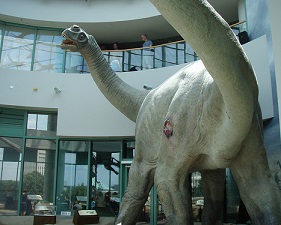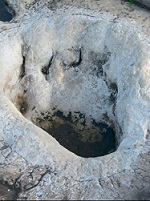
Pleurocoelus is a dinosaur that belongs to the group of sauropods, which are known for their colossal size, long necks, and herbivorous diets. This dinosaur lived during the Early Cretaceous period, approximately 110 million years ago, and it is part of the rich tapestry of prehistoric life on Earth. Pleurocoelus is a fascinating creature, and its study has provided valuable insights into the biology, behavior, and evolution of these iconic giants.
The history of Pleurocoelus is marked by taxonomic controversy. Initially, it was described as a distinct genus based on fossil specimens found in North America, primarily in states like Texas and Oklahoma. However, over time, the classification of this dinosaur has been questioned, leading to debates within the paleontological community. Today, some researchers consider Pleurocoelus to be a nomen dubium, which means its distinctiveness as a genus is uncertain. This taxonomic uncertainty highlights the complexities of dinosaur classification and the challenges paleontologists face in piecing together the ancient past.
| Name: | Pleurocoelus dinosaurs |
| Size: | Around 70-80 feet in length. |
| Main Facts: | Pleurocoelus is known for its colossal size, rivaling the largest sauropods, and its herbivorous diet, contributing to Cretaceous ecosystems. |
Pleurocoelus shared many characteristics with other sauropods. It had a long neck, a relatively small head, a massive body, and a lengthy tail. Its legs were sturdy and pillar-like, designed to support its colossal weight. These anatomical features were adaptations for a herbivorous lifestyle. Their long necks enabled them to reach high into trees to feed on leaves and other vegetation, while their robust bodies and powerful digestive systems helped process the plant material.

Pleurocoelus, like all sauropods, was herbivorous. Their diet consisted mainly of plants and vegetation, and their teeth were adapted for grinding and processing plant material. They likely fed on a variety of plants, including ferns, cycads, and conifers. Their enormous size allowed them to consume vast quantities of plant matter to meet their energy requirements.
Fossil evidence of Pleurocoelus has been found primarily in North America, particularly in regions that are now part of the United States. The discovery of these fossils has provided valuable information about the distribution of sauropods during the Early Cretaceous and the paleoenvironment of North America at that time.
Sauropods, including Pleurocoelus, may have exhibited social behaviors, including herding. Some fossil evidence suggests that these massive dinosaurs moved in groups or herds, which could have provided benefits such as protection against predators and enhanced foraging efficiency. Studying the social dynamics of sauropods contributes to our understanding of their complex behaviors and interactions within prehistoric ecosystems.
The taxonomic status of Pleurocoelus serves as a reminder of the ongoing challenges in dinosaur classification. Paleontologists continually refine their understanding of dinosaur relationships based on new fossil discoveries and advanced analytical techniques. As a result, some dinosaurs that were once considered distinct genera may be reclassified or regarded with uncertainty.
Pleurocoelus, an awe-inspiring sauropod dinosaur from the Early Cretaceous, showcased a colossal frame, with estimates reaching 70-80 feet in length. This herbivore boasted a long neck, small head, and sturdy pillar-like legs to support its massive weight. Pleurocoelus primarily fed on plants and vegetation, utilizing its serrated teeth for efficient processing.
Fossil remains have been discovered in North America, particularly in the United States, shedding light on the dinosaur's geographical distribution. Despite taxonomic debates, Pleurocoelus represents an essential piece of the sauropod puzzle, emphasizing their monumental size, herbivorous lifestyle, and possible social behaviors in the ancient ecosystems they inhabited.
Pleurocoelus shared key sauropod features, including an elongated neck, small head, massive body, and long tail, resembling giants like Brachiosaurus and Diplodocus.
Pleurocoelus' colossal stature, with estimates of 70-80 feet in length, places it among the largest dinosaurs, rivaling the size of other sauropods like Argentinosaurus.
Pleurocoelus' herbivorous diet aligns it with sauropods as exclusive plant eaters, a trait seen in Brachiosaurus and Apatosaurus.
Fossil evidence of Pleurocoelus in North America parallels the distribution of other sauropods, such as Camarasaurus and Sauroposeidon, reflecting regional habitats.
Speculations of Pleurocoelus herding align with the potential herding behaviors of other sauropods like Mamenchisaurus, suggesting shared social dynamics.
Like some other dinosaurs, Pleurocoelus has faced taxonomic uncertainty, highlighting the complexities of classifying prehistoric creatures.
Coexisting with diverse dinosaurs, Pleurocoelus shared its ecosystem with theropods like Acrocanthosaurus, contributing to our understanding of Late Cretaceous environments.
Comparing Pleurocoelus' feeding adaptations with those of other sauropods reveals variations in browsing height and plant preferences, reflecting ecological niches..